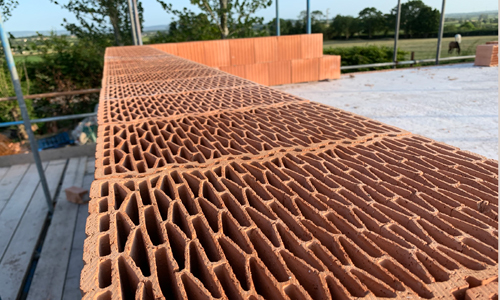The Future Of Masonry Structures In Civil Engineering Design

Reinforced masonry structures have become popular due to their durability and strength. Masonry walls are constructed using masonry units such as concrete blocks, bricks, or stone bound together with mortar. Reinforced masonry walls can be used for load-bearing purposes and are commonly used in the construction of commercial and residential buildings. In this article, we will discuss the design of reinforced masonry structures, codes and standards, and the frequently asked questions about this type of structure.
Introduction to Design of Reinforced Masonry Structures
The design of reinforced masonry structures involves ensuring that the structure is safe and stable. This is achieved by analyzing the loads applied to the structure and ensuring that the materials used in the construction can withstand those loads. The design process usually involves determining the loads that the structure will be exposed to and selecting the appropriate masonry units, reinforcing, and mortar to ensure that the structure is safe and stable.
The design of reinforced masonry structures is typically done by a structural engineer who is well-versed in masonry design. The engineer must follow the relevant codes and standards to ensure that the structure is safe and meets all statutory requirements. The design process must also take into account the site conditions and the expected lifespan of the structure.
Frequently Asked Questions
Q: What are the benefits of using reinforced masonry structures?
A: Reinforced masonry structures have a number of benefits, including:
- Strength and durability - Reinforced masonry walls are very strong and durable, making them ideal for load-bearing structures.
- Fire resistance - Masonry is a fire-resistant material, which makes it ideal for building structures that require a high level of fire safety.
- Aesthetics - Masonry walls have a timeless, classic look that can enhance the appearance of any building.
Q: What codes and standards apply to the design of reinforced masonry structures?
A: The design of reinforced masonry structures must adhere to the relevant building codes and standards. In the United States, the International Building Code (IBC) and the Masonry Standards Joint Committee (MSJC) Building Code Requirements and Specification for Masonry Structures are the most commonly used standards.
Q: What types of reinforcement are used in reinforced masonry structures?
A: The most commonly used types of reinforcement in reinforced masonry structures are steel reinforcement bars (rebars) and wire reinforcement (mesh). The reinforcement is used to provide tensile strength to the masonry wall, which is otherwise weak in tension.
Q: How do you calculate the strength of a reinforced masonry wall?
A: The strength of a reinforced masonry wall is determined by analyzing the loads applied to the wall and ensuring that the wall can withstand those loads. The strength of the masonry wall is influenced by several factors, including the compressive strength of the masonry units, the tensile strength of the reinforcement, and the bond between the masonry units and the mortar.
Q: How long do reinforced masonry structures last?
A: Reinforced masonry structures are designed to last a long time, with a lifespan of up to 100 years or more. The lifespan of a masonry wall depends on several factors, including the quality of the construction, the quality of the materials used, and the exposure to the elements.
Q: How are reinforced masonry walls constructed?
A: Reinforced masonry walls are typically constructed in a series of courses, with each course consisting of a row of masonry units. The mortar is applied between the masonry units to bond them together. The reinforcement is placed in the mortar joint between the masonry units and tied to the adjacent reinforcement. The process is repeated for each course until the wall is complete.
Q: Can reinforced masonry structures be used for seismic or wind-resistant designs?
A: Yes, reinforced masonry structures can be designed to withstand seismic and wind loads. The design of masonry walls must take into account the expected loads and must be designed to resist those loads without collapsing.
Q: What is the maintenance required for reinforced masonry structures?
A: Reinforced masonry structures require very little maintenance, with occasional cleaning and repointing of the mortar joints being the most common maintenance requirements. The masonry units themselves are very durable and can last for many years without needing replacement.
Conclusion
Reinforced masonry structures are a popular building material due to their durability and strength. The design process ensures that the structure is safe and stable, and adheres to the relevant building codes and standards. This type of structure has several benefits, including strength and durability, fire resistance, and aesthetics that can enhance the appearance of any building. If you are considering reinforced masonry structures for your construction project, consult with a qualified structural engineer who can help you design a safe and durable structure.


Post a Comment for "The Future Of Masonry Structures In Civil Engineering Design"